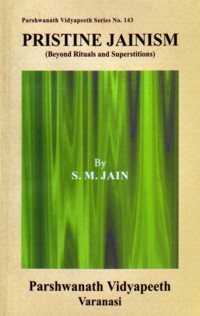It is interesting to note that the above cyclic ascending and descending changes conform to cyclic retrogression and progression well established, studied and documented in modern forestry. If a good dense forest with higher varieties of trees is subjected to biotic pressures of increasing human and animal population, resulting in over exploitation, grazing, burning, then the forest degrades to lower and lower quality and density and to grasslands and ultimately barren eroded lands. It is well established that there were good forests initially. These were what are now technically described as climax forests. Such forests have the highest evolved variety of trees, which perpetuates through symbiotic interactions of all life forms. Even carnivore like tigers, wolves etc. were not killers but nature's scavengers for naturally dead bodies, which were aplenty. The conditions in these climax or pristine forests conform to conditions mentioned under Sukhma-Sukhma period. The degradation of climax forest started with increasing biotic pressure and very rapidly after birth of agriculture and more so with rapid industrialisation. This is retrogression in modern ecological and forestry terms. This corresponds to descending order mentioned in Jain literature. If the process is reversed and biotic pressure is withdrawn then even a highly degraded bare land starts improving with first grasses, then higher and higher forms of species and eventually climax forest. There are several stages both in succession (progression) and also in retrogression. The succession or retrogression can be stopped and sustained at any stage as is done in forest management practices, e.g. teak forests which are in serial (succession) stage and if allowed to progress the new succeeding species that will come up though higher in succession are not economically as valuable as teak. So progression is stopped at teak by manipulating biotic factors. This is progression or succession in modern scientific terms and it corresponds to ascending order mentioned in Jain literature. Such ecological perceptions in ancient Jain literature, now recognised in modern science, are really astounding.
Pristine Jainism : Succession-Retrogression Concepts in Forestry
Author:
 S.M. Jain
S.M. Jain
 S.M. Jain
S.M. Jain
Published: 06.06.2012
Updated: 06.06.2012
Updated: 06.06.2012
Sources
| Title: | Pristine Jainism (Beyond rituals and superstitions) |
| Publisher: | Parshwanath Vidyapeeth, Varanasi, India |
| by: | Prof. Sagarmal Jain |
| Edition: | 2003 |

Page glossary
Some texts contain footnotes and glossary entries. To distinguish between them, the links have different colors.
Page statistics
This page has been viewed 688 times.